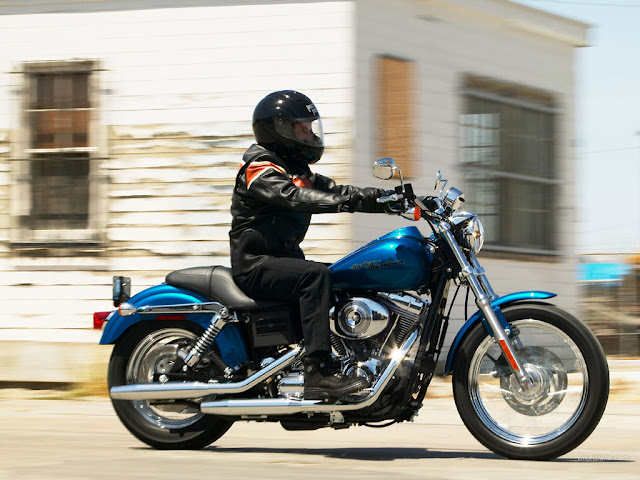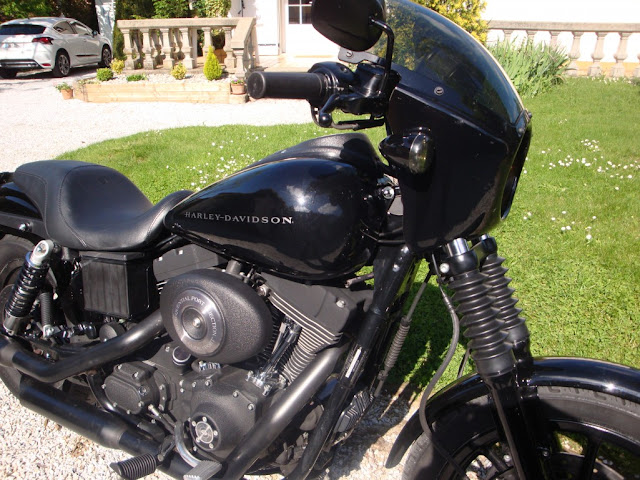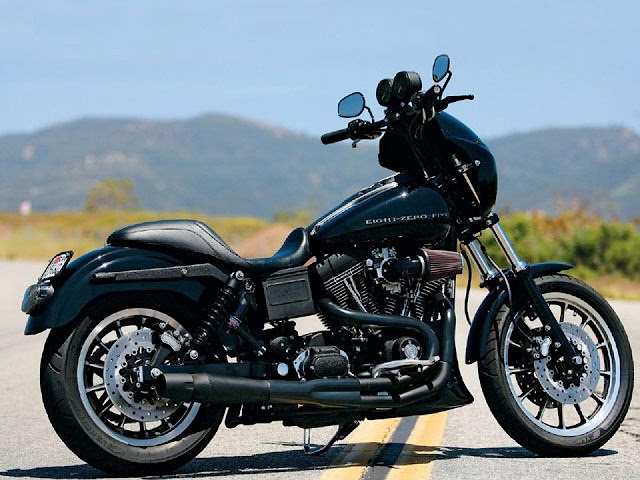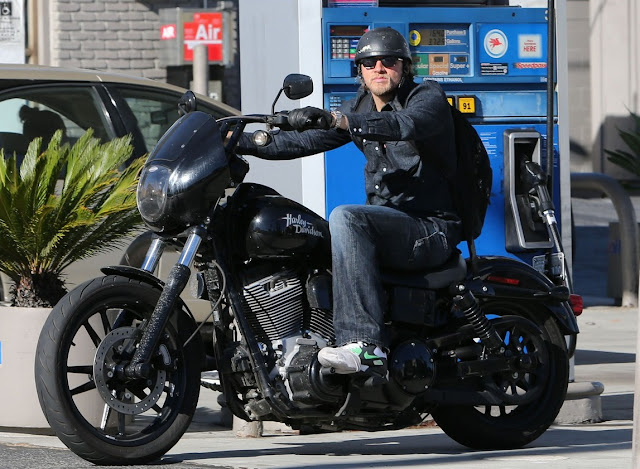Harley-Davidson Glide Sport Dyna Super
Only Harley- Davidson would call a bike like this the ‘Sport’, but by cruiser standards the model whose official name was FXDX was quick and handled well. The Twin Cam 88 motor’s most obvious feature was its oval air-filter cover - and its extra power.
When Harley-Davidson introduced its Twin Cam 88 engine for the 1999 model year, the result was a range of bikes designed to take the old firm into the 21st century. The new powerplant was more powerful, stronger, and more refined. Seven models were fitted with the Twin Cam motor in its first year. The quickest and arguably the most impressive was the new Dyna Super Glide Sport.
By Harley standards the lean and basic Sport with its near-flat handlebars, black-finished Twin Cam 88 engine and relatively sporty chassis was light, agile and powerful. Its new Twin Cam 88 motor was the star of the show, retaining the look, sound and feel of a traditional Harley but putting out enough extra power and torque to make the new bike feel distinctly more lively.
Twin-cam engine
The Twin Cam 88 got its name from its twin camshafts - which still operated pushrods - and capacity of 88 cubic inches, or 1450cc; up from the 1340cc, 80-cube Evolution engine. Apart from its larger, oval-shaped air filter cover the new motor looked much like the Evolution unit. But besides its revised cam system and extra capacity, the 88 was strengthened throughout with larger bearings and better lubrication.
Demands for retained identity convinced Harley to persist with the traditional air-cooled, pushrod- operated, 45-degree V-twin layout. The knife-and- fork conrod arrangement, which allows cylinders to remain in line, also stayed - but within that format almost everything was changed. Just 18 of the 450 parts in the Evolution engine were retained. A new oval air-cleaner cover held an airbox that was 70 per cent larger. Breathing was also improved by the engine's higher compression ratio and reshaped combustion chambers. Harley insisted that performance gains were not simply due to the new twin-camshaft layout, but the overall increase was impressive. Peak power was 68bhp at 5400rpm, compared to nearer 50bhp for the Evolution engine.
From the rider's seat, the 88 motor's big advantage was its improved throttle response. The Sport was very lively both at low revs, where it pulled cleanly from below 2000rpm, and at higher speeds, where it accelerated from 7()mph (l I3km/h) or more with an urgency that no previous standard Harley could approach - all the way to a genuine top speed of about l lOmph (I77km/h).
And the Sport's handling was good too. Chassis rigidity was increased by the design of the new engine, whose gearbox was more solidly bolted on. At 66lib (300kg) the Sport w;as no lightweight, but it felt reasonably agile and handled fairly well, aided by soft but well-controlled suspension. Its twin front discs gave a reasonable amount of braking power, too. despite their relatively low-tech caliper design.
The Super Glide Sport was an impressive departure for Harley, and not only for its new engine. It combined long-legged cruising ability with a fair turn of speed: stable handling with surprising agility: and simple, understated looks with the trademark Harley image and quality of finish. It was a fine bike that proved the Milwaukee firm was serious about performance as well as style. The success of the Super Glide Sport, particularly in export markets, inspired Harley to take things a stage further just 12 months later. While the 1450cc Twin Cam motor was unchanged, the chassis was uprated with fully adjustable cartridge forks, sportier geometry, more sophisticated rear shocks, new brakes with four- piston calipers, plus a fatter, soft-compound rear tyre. The result was a bike that looked almost identical, but cornered and braked notably better not just than its predecessor, but than any previous Harley cruiser.
Wide handlebars gave a riding position that was fine for moderate cruising speeds, but soon got tiring at lOOmph (161 km/h).
This bike is a 2000 model Super Glide Sport, complete with uprated chassis. Its powerful four- piston front brake calipers, made by Harley’s traditional supplier Hayes, were later fitted to other models too. The rear tyre was a wider, 150-section Dunlop in softer sport compound for extra grip.
Specification Harley-Davidson Dyna Super Glide Sport (1999)
- Engine Air-cooled ohv four-valve pushrod 45-degree V-twin
- Capacity 1450cc (95.3 x 101.6mm)
- Maximum power 68bhp @ 5400rpm
- Transmission Five-speed, belt final drive
- Frame Steel twin downtube
- Suspension Telescopic front; twin shocks rear
- Weight 6611b (300kg)
- Top speed 110mph (177km/h)



















0 comments: